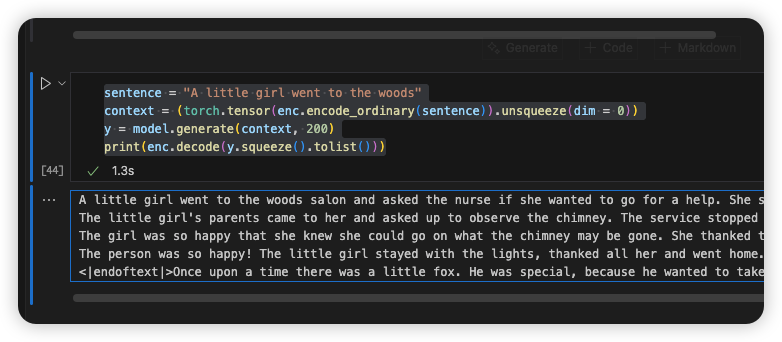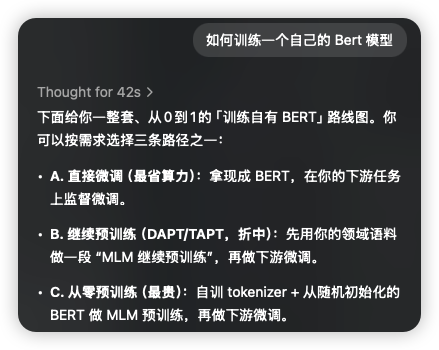1
2
3
4
5
6
7
8
9
10
11
12
13
14
15
16
17
18
19
20
21
22
23
24
25
26
27
28
29
30
31
32
33
34
35
36
37
38
39
40
41
42
43
44
45
46
47
48
49
50
51
52
53
54
55
56
57
58
59
60
61
62
63
64
65
66
67
68
69
70
71
72
73
74
75
76
77
78
79
80
81
82
83
84
85
86
87
88
89
90
91
92
93
94
95
96
97
98
99
100
101
102
103
104
105
106
107
108
109
110
111
112
113
114
115
116
117
118
119
120
121
122
123
124
125
126
127
128
129
130
131
132
133
134
135
136
137
138
139
140
141
142
143
144
145
146
147
148
149
150
151
152
153
154
155
156
157
158
159
160
161
162
163
164
165
166
167
168
169
170
171
172
| import torch
import torch.nn as nn
import torch.nn.functional as F
import math
from dataclasses import dataclass
import numpy as np
from tqdm.auto import tqdm
from contextlib import nullcontext
import os
class LayerNorm(nn.Module):
"""
- 与 `nn.LayerNorm(ndim, elementwise_affine=bias)` 等价,手搓是为了**可控是否带 bias**。
- 作用:把最后一维做标准化,稳定训练。
- 形状不变:`(B, T, C) → (B, T, C)`。
"""
def __init__(self, ndim, bias):
super().__init__()
self.weight = nn.Parameter(torch.ones(ndim))
self.bias = nn.Parameter(torch.zeros(ndim)) if bias else None
def forward(self, x):
return F.layer_norm(x, self.weight.shape, self.weight, self.bias, 1e-5)
class CausalSelfAttention(nn.Module):
"""
自回归注意力
"""
def __init__(self, config):
super().__init__()
assert config.n_embd % config.n_head == 0
self.c_attn = nn.Linear(config.n_embd, 3 * config.n_embd, bias=config.bias) # 生成 Q,K,V
self.c_proj = nn.Linear(config.n_embd, config.n_embd, bias=config.bias) # 多头拼回后做投影
# 注意力/残差丢弃
self.attn_dropout = nn.Dropout(config.dropout)
self.resid_dropout = nn.Dropout(config.dropout)
self.n_head = config.n_head
self.n_embd = config.n_embd
self.flash = hasattr(F, 'scaled_dot_product_attention')
if not self.flash:
self.register_buffer("bias", torch.tril(torch.ones(config.block_size, config.block_size))
.view(1, 1, config.block_size, config.block_size))
def forward(self, x):
B, T, C = x.size()
q, k, v = self.c_attn(x).split(self.n_embd, dim=2)
k = k.view(B, T, self.n_head, C // self.n_head).transpose(1, 2)
q = q.view(B, T, self.n_head, C // self.n_head).transpose(1, 2)
v = v.view(B, T, self.n_head, C // self.n_head).transpose(1, 2)
if self.flash:
y = F.scaled_dot_product_attention(q, k, v, attn_mask=None, dropout_p=self.attn_dropout.p if self.training else 0.0, is_causal=True)
else:
att = (q @ k.transpose(-2, -1)) * (1.0 / math.sqrt(k.size(-1)))
att = att.masked_fill(self.bias[:, :, :T, :T] == 0, float('-inf'))
att = F.softmax(att, dim=-1)
att = self.attn_dropout(att)
y = att @ v
y = y.transpose(1, 2).contiguous().view(B, T, C)
y = self.resid_dropout(self.c_proj(y))
return y
class MLP(nn.Module):
def __init__(self, config):
super().__init__()
self.c_fc = nn.Linear(config.n_embd, 4 * config.n_embd, bias=config.bias)
self.gelu = nn.GELU()
self.c_proj = nn.Linear(4 * config.n_embd, config.n_embd, bias=config.bias)
self.dropout = nn.Dropout(config.dropout)
def forward(self, x):
return self.dropout(self.c_proj(self.gelu(self.c_fc(x))))
class Block(nn.Module):
def __init__(self, config):
super().__init__()
self.ln1 = LayerNorm(config.n_embd, config.bias)
self.attn = CausalSelfAttention(config)
self.ln2 = LayerNorm(config.n_embd, config.bias)
self.mlp = MLP(config)
def forward(self, x):
x = x + self.attn(self.ln1(x))
x = x + self.mlp(self.ln2(x))
return x
@dataclass
class GPTConfig:
block_size: int
vocab_size: int
n_layer: int
n_head: int
n_embd: int
dropout: float = 0.0
bias: bool = True
class GPT(nn.Module):
def __init__(self, config):
super().__init__()
self.config = config
self.transformer = nn.ModuleDict(dict(
wte=nn.Embedding(config.vocab_size, config.n_embd),
wpe=nn.Embedding(config.block_size, config.n_embd),
drop=nn.Dropout(config.dropout),
h=nn.ModuleList([Block(config) for _ in range(config.n_layer)]),
ln_f=LayerNorm(config.n_embd, config.bias),
))
self.lm_head = nn.Linear(config.n_embd, config.vocab_size, bias=False)
self.transformer.wte.weight = self.lm_head.weight # weight tying
self.apply(self._init_weights)
for pn, p in self.named_parameters():
if pn.endswith('c_proj.weight'):
nn.init.normal_(p, mean=0.0, std=0.02 / math.sqrt(2 * config.n_layer))
def _init_weights(self, module):
if isinstance(module, nn.Linear):
nn.init.normal_(module.weight, mean=0.0, std=0.02)
if module.bias is not None:
nn.init.zeros_(module.bias)
elif isinstance(module, nn.Embedding):
nn.init.normal_(module.weight, mean=0.0, std=0.02)
def forward(self, idx, targets=None):
device = idx.device
b, t = idx.size()
assert t <= self.config.block_size
pos = torch.arange(0, t, dtype=torch.long, device=device)
tok_emb = self.transformer.wte(idx)
pos_emb = self.transformer.wpe(pos)
x = self.transformer.drop(tok_emb + pos_emb)
for block in self.transformer.h:
x = block(x)
x = self.transformer.ln_f(x)
if targets is not None:
logits = self.lm_head(x)
loss = F.cross_entropy(logits.view(-1, logits.size(-1)), targets.view(-1), ignore_index=-1)
return logits, loss
else:
logits = self.lm_head(x[:, [-1], :])
return logits, None
@torch.no_grad()
def generate(self, idx, max_new_tokens, temperature=1.0, top_k=None):
"""
Generate tokens given a conditioning sequence.
idx: Tensor of shape (B, T)
"""
for _ in range(max_new_tokens):
idx_cond = idx if idx.size(1) <= self.config.block_size else idx[:, -self.config.block_size:]
logits, _ = self(idx_cond)
logits = logits[:, -1, :] / temperature
if top_k is not None:
v, _ = torch.topk(logits, min(top_k, logits.size(-1)))
logits[logits < v[:, [-1]]] = -float('Inf')
probs = F.softmax(logits, dim=-1)
idx_next = torch.multinomial(probs, num_samples=1)
idx = torch.cat((idx, idx_next), dim=1)
return idx
config = GPTConfig(
vocab_size=50257, # 使用分词器的词汇表大小
block_size=128, # 或你训练时使用的任何上下文大小
n_layer=6,
n_head=6,
n_embd=384,
dropout=0.1,
bias=True
)
model = GPT(config)
|

